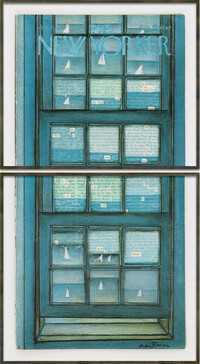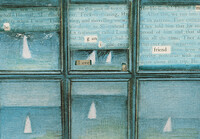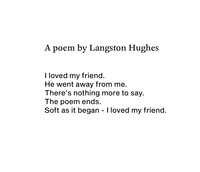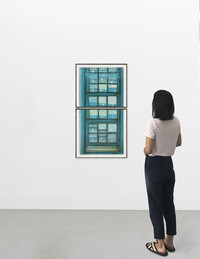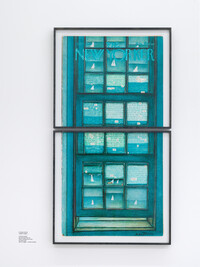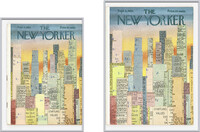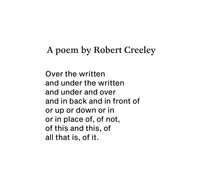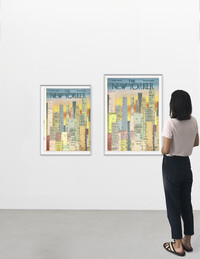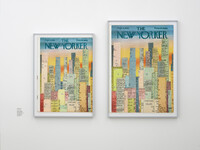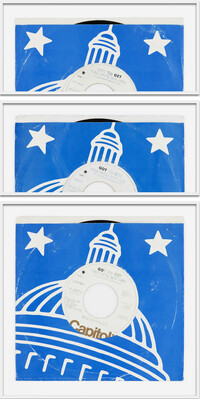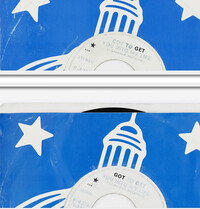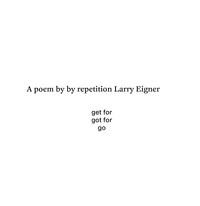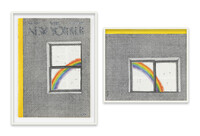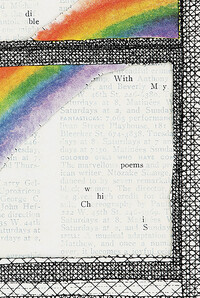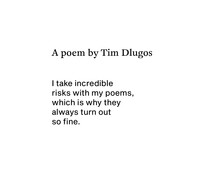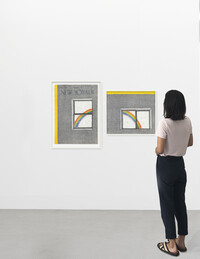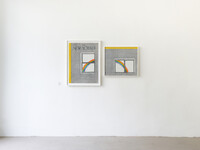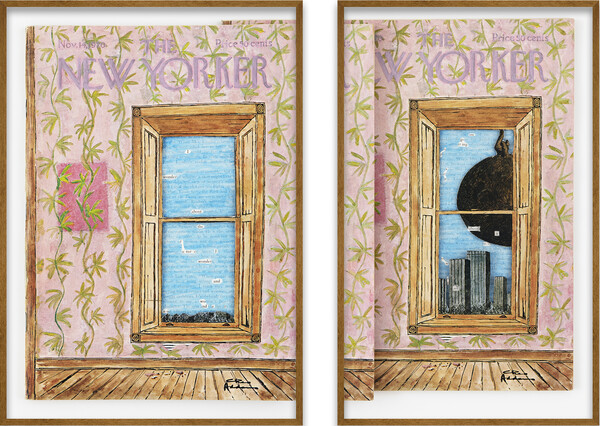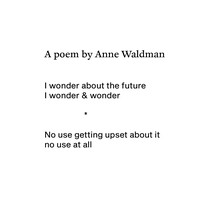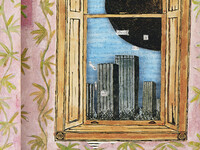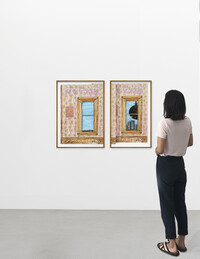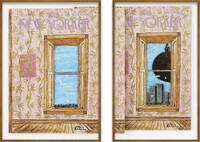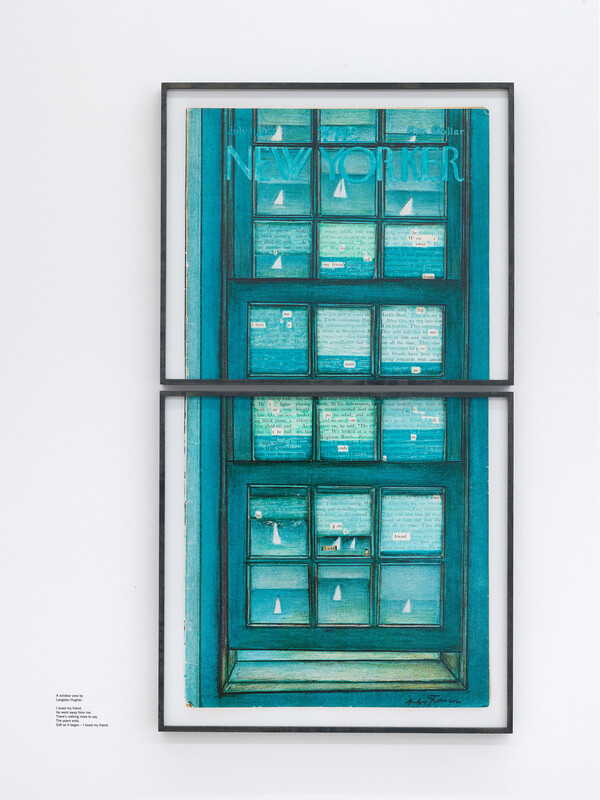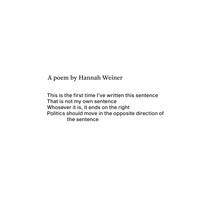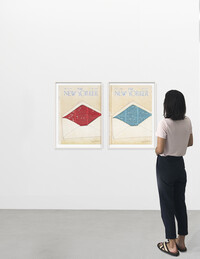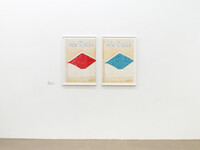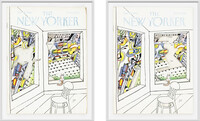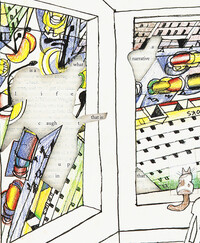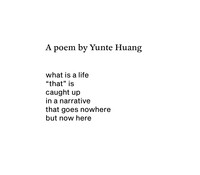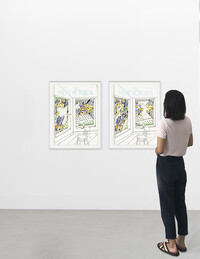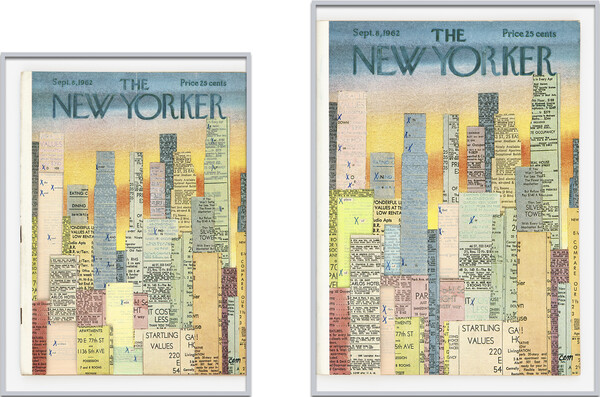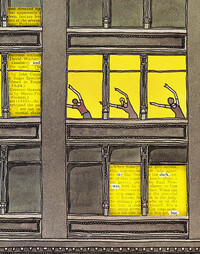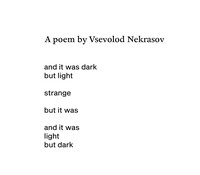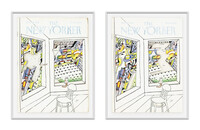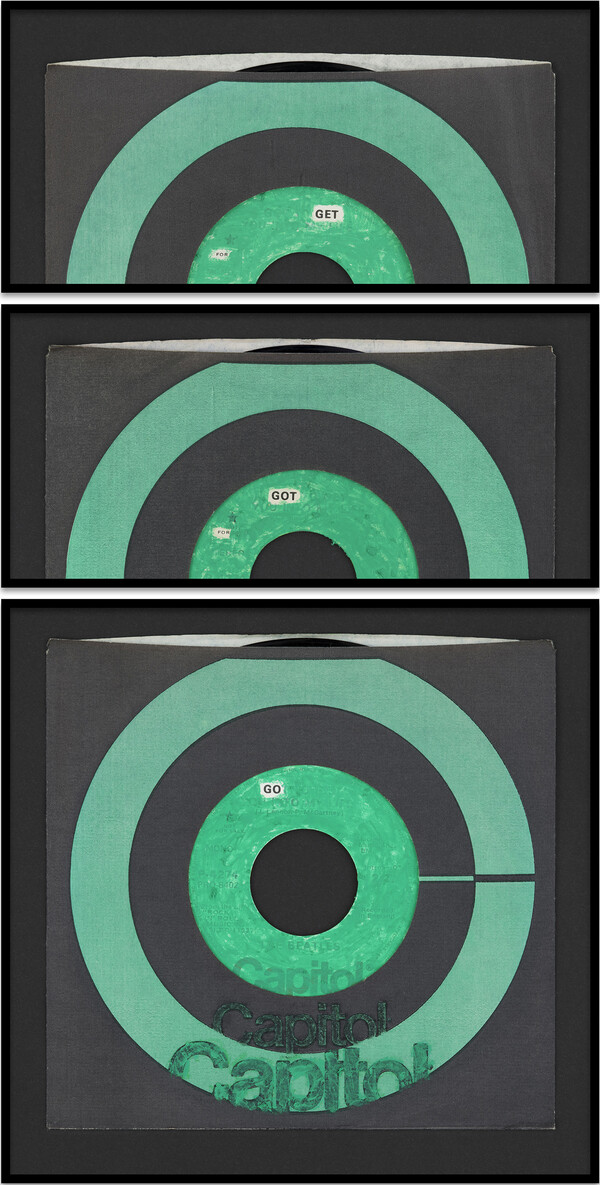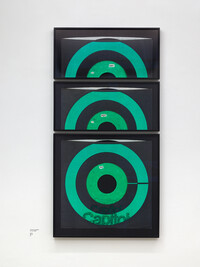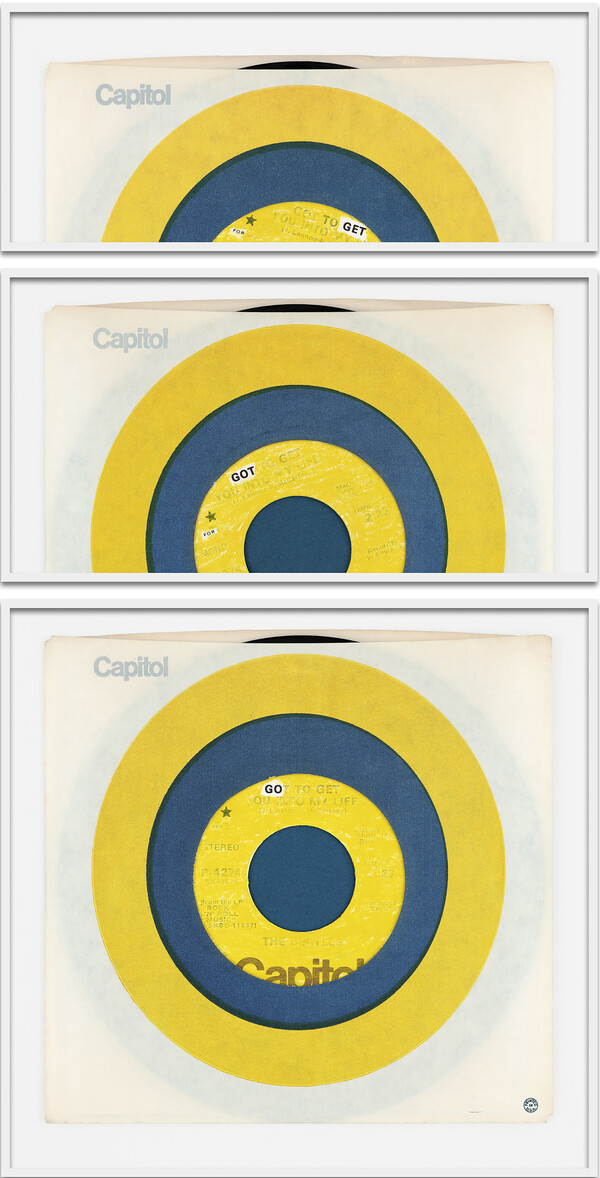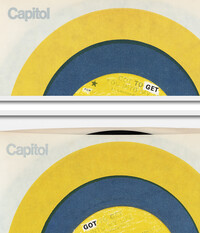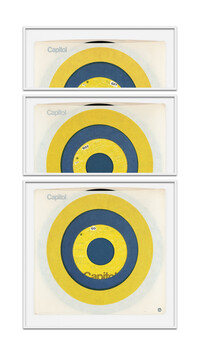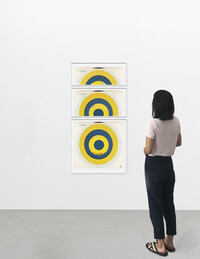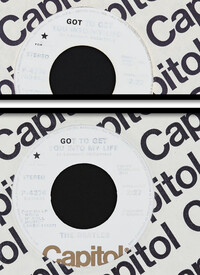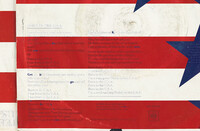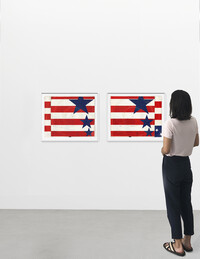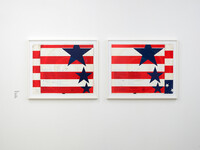Can a poem be an image at the same time, the photograph itself a visual poem and the historical object a reading matter?
Natalie Czech
Fiction Mood
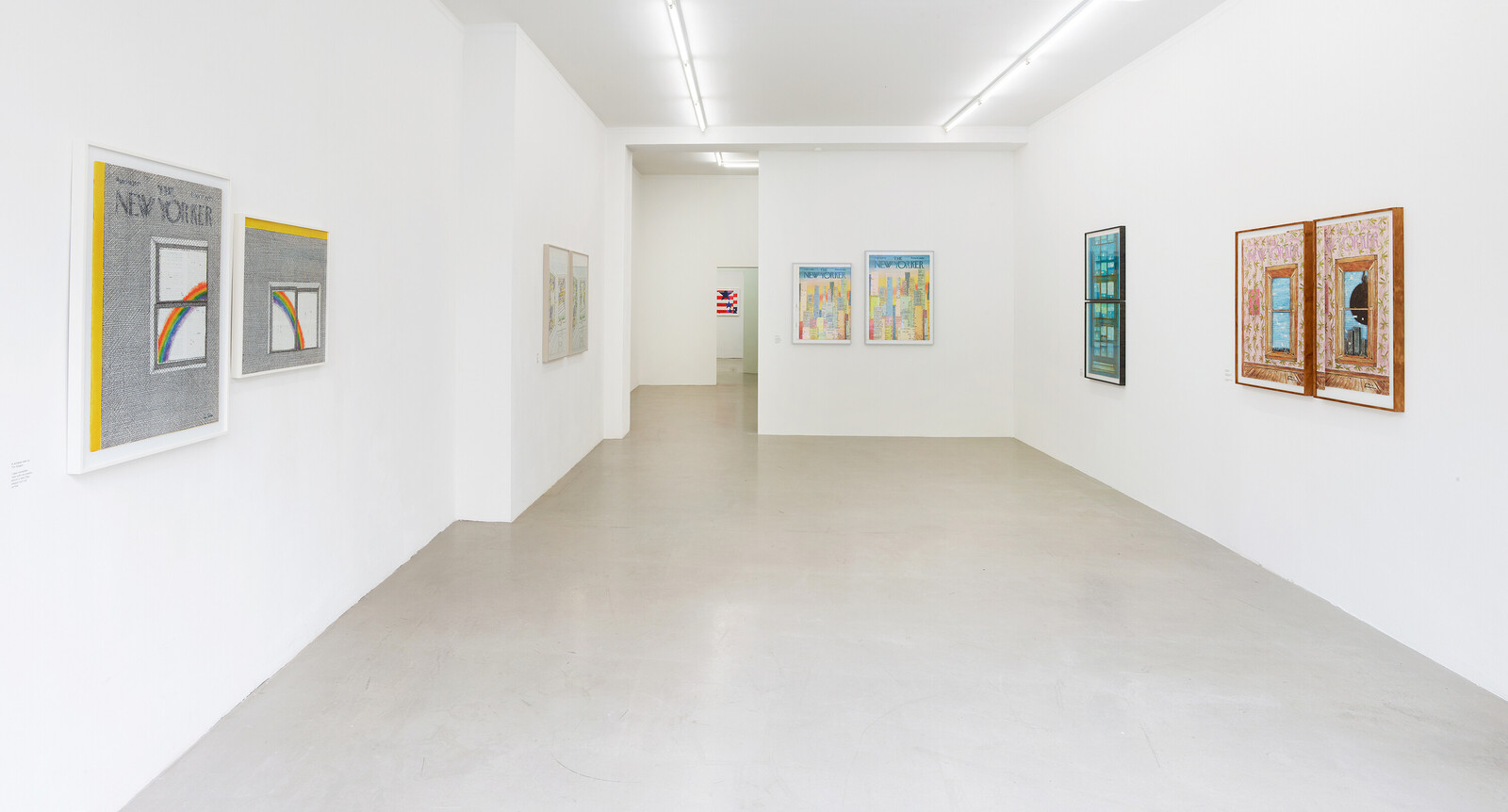
Natalie Czech’s new works presented in the show are directly influenced by the political and social experiences during the lockdown: What impact did the spatial, social and media-related limitation have on the view to the “outside” ? The staging of dialogs between image and text is at the core of Natalie Czech’s conceptual photography. Adapting aspects of pop and conceptual art, Natalie Czech plays with the “power of images” and the “meaning between the lines”. Objects become “words” and texts become “images”.
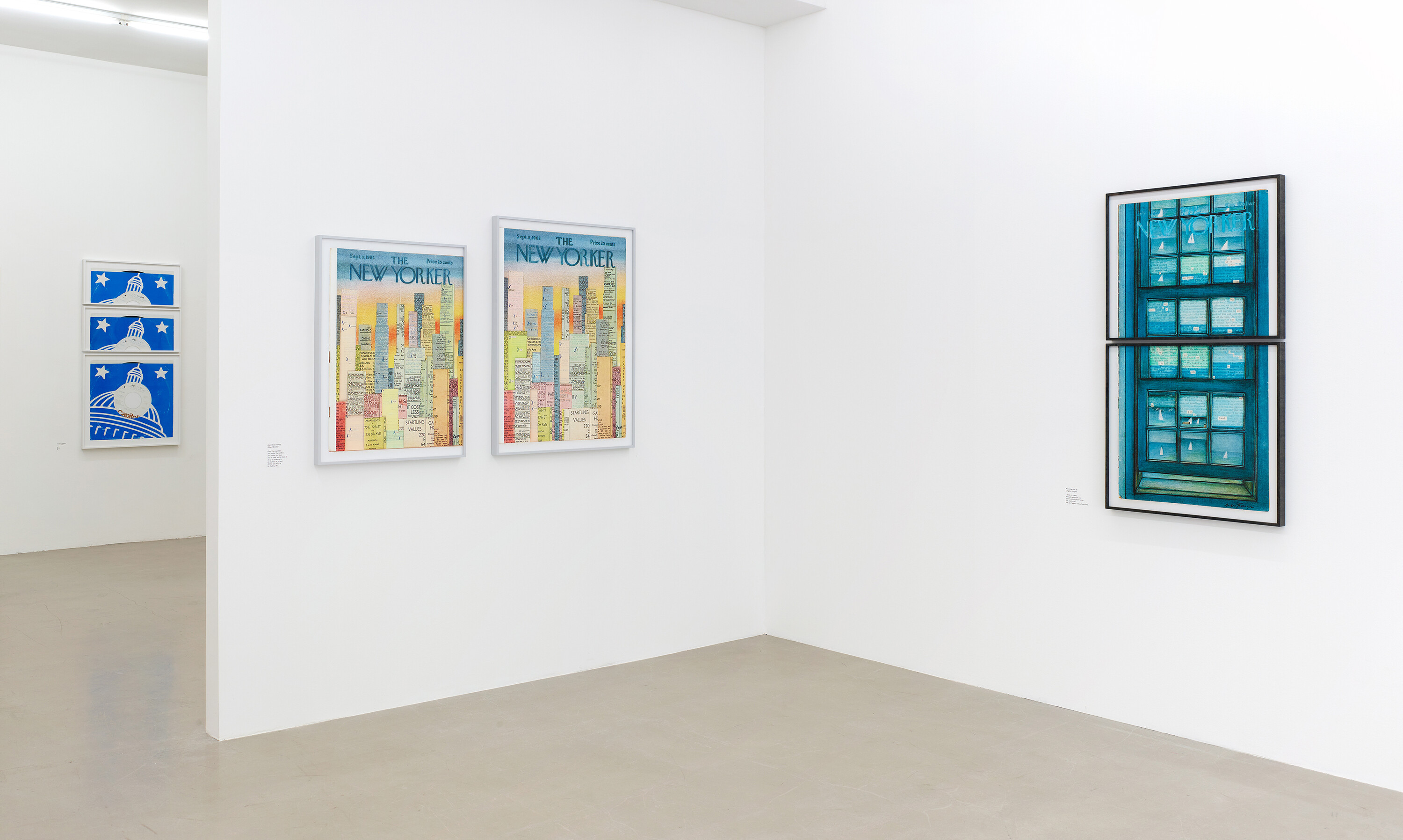
The new works, Window Views, are based on this, their motifs are drawn from historical issues of the iconic magazine The New Yorker“ from the 1960s, 1970s and 1990s. The magazine was founded in 1925 and is famous for its cover illustrations that themselves are already collectibles and for the most part depict interiors and window views. A striking feature of the magazine, which contains the legendary sections “Talk of the Town” and “Goings on about Town” along with reviews of current Broadway productions, theater plays, movies or nightlife events, is that it dispenses with photographs. Natalie Czech cuts out certain parts of the respective covers and the following pages to make visible the original texts of the legendary columns. There she finds and marks through overpainting poems by literally “hidden voices” such as Anne Waldman, Langston Hughes, Tim Dlugos, or Hannah Weiner that reflect the social mechanisms of the search for identity.
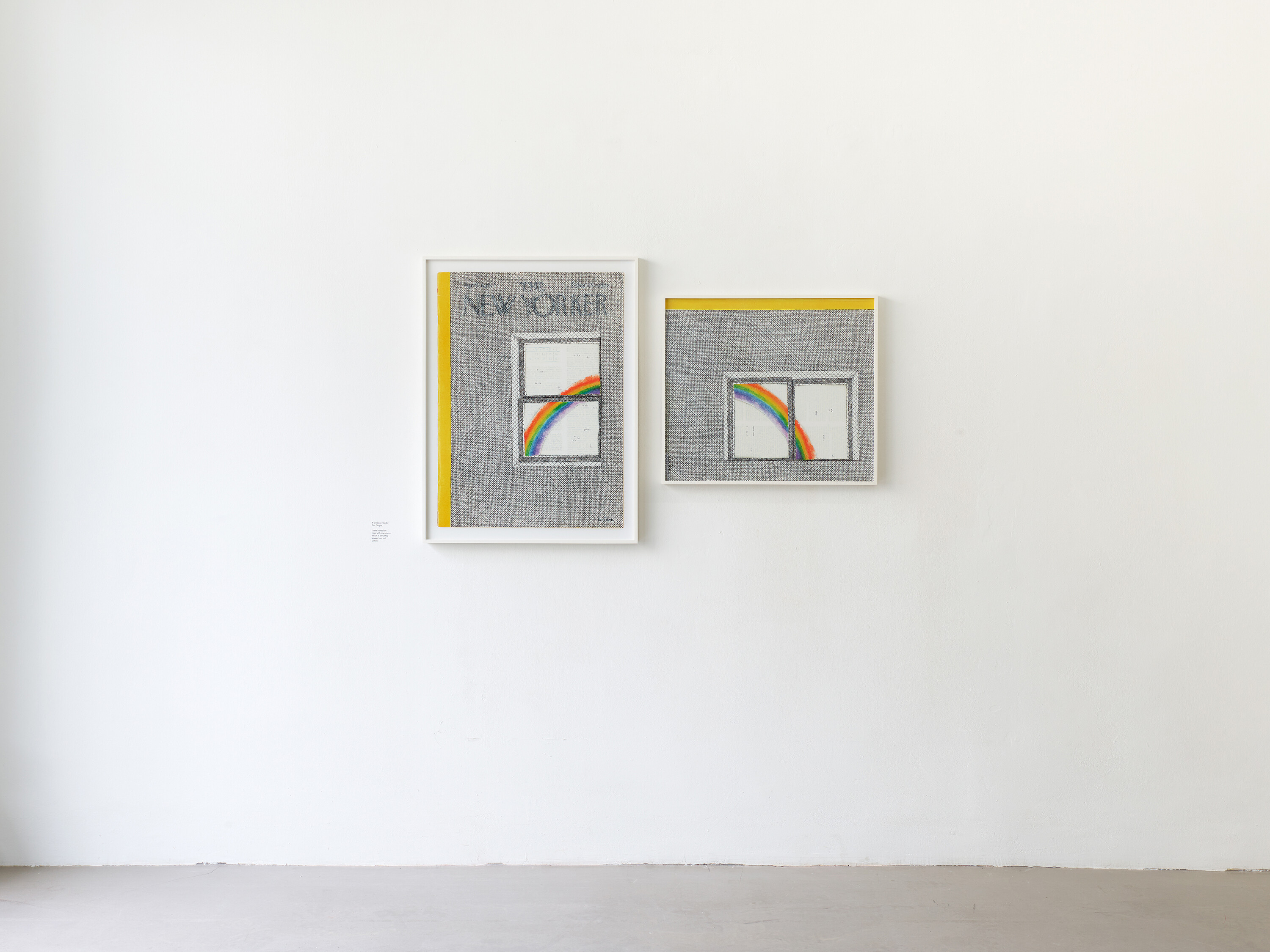
A window view by Tim Dlugos
The diptych is based on the cover illustration of „The New Yorker“ by Le-Tan published in 1977. It shows the window view of a rainbow. Natalie Czech cut out the spaces in between on the left-hand side down to page 2. In the column „Goings On About Town“, one reads about the theater piece „For Colored Girls Who Have Considered Suicide/When The Rainbow is Enuf“. The right-hand part was cut down to page 24 revealing the review of the movie „Just Before Night Falls“ by Claude Chabrol and the documentary „Harlan County, USA“ by Barbara Kopple. In these texts, Natalie Czech „finds“ and „writes“ the poem about risk, hope and love by Tim Dlugos, who was influenced by pop and died from AIDS in 1990.
A window view by Anne Waldman
The diptych is based on the cover illustration of “The New Yorker” by Charles Addams published in 1970. It shows a window view of New York’s skyline. While Natalie Czech cut out the entire window section down to page 154 for the motif on the left-hand side, she left the right part of the skyline and the wrecking ball untouched. In the article “On and Off the Avenue – Feminine Fashions,” she finds and marks the poem “HEADING OFF” by Anne Waldman. While the original text deals with the opinions of different cosmetics manufacturers like Estée Lauder or Revlon, Anne Waldman’s poetry stands for a self-determined definition of the female body and identity. In a dialog with the pink interior of the original picture, a cheeky play with inner and outer expectations evolves.
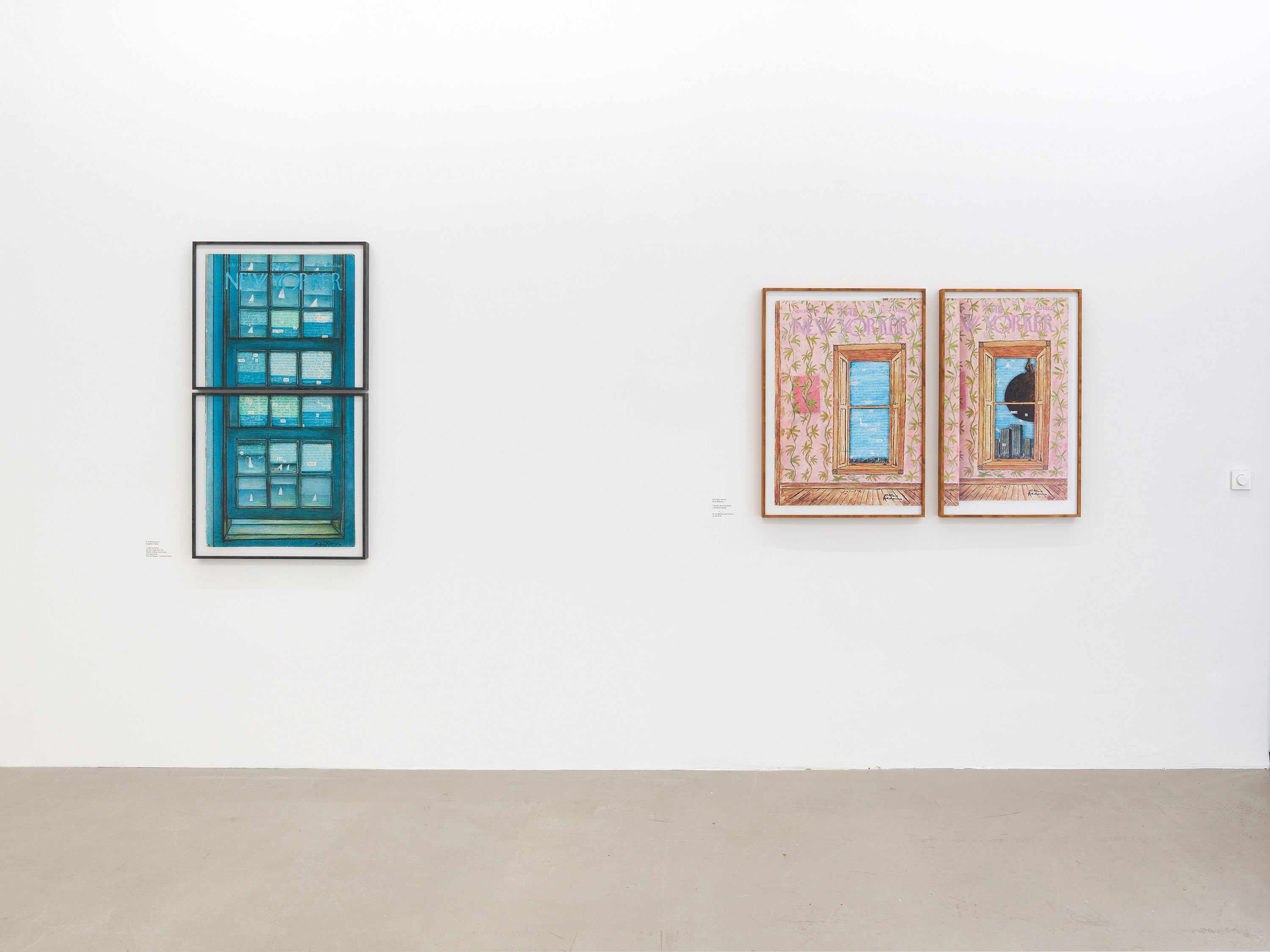
A window view by Langston Hughes
The diptych is based on the cover illustration of „The New Yorker“ by André Francois published in 1977. It shows a variety of window views to a seascape near New York City. Natalie Czech cut out a number of window panes down to page 23, where the column „Talk of the Town“ features a portrait of the African-American singer Garland Jeffreys. In the original text, he is cited with the words: „‘Brighton-Beach-Private‘ - When I was little, I used to wonder why my friends could go into that place.” In this text, Natalie Czech finds and marks through overpainting the poem by the African-American poet, writer and activist Langston Hughes (1901- 1967) that deals with departure and ultimately overcomes social limitations.
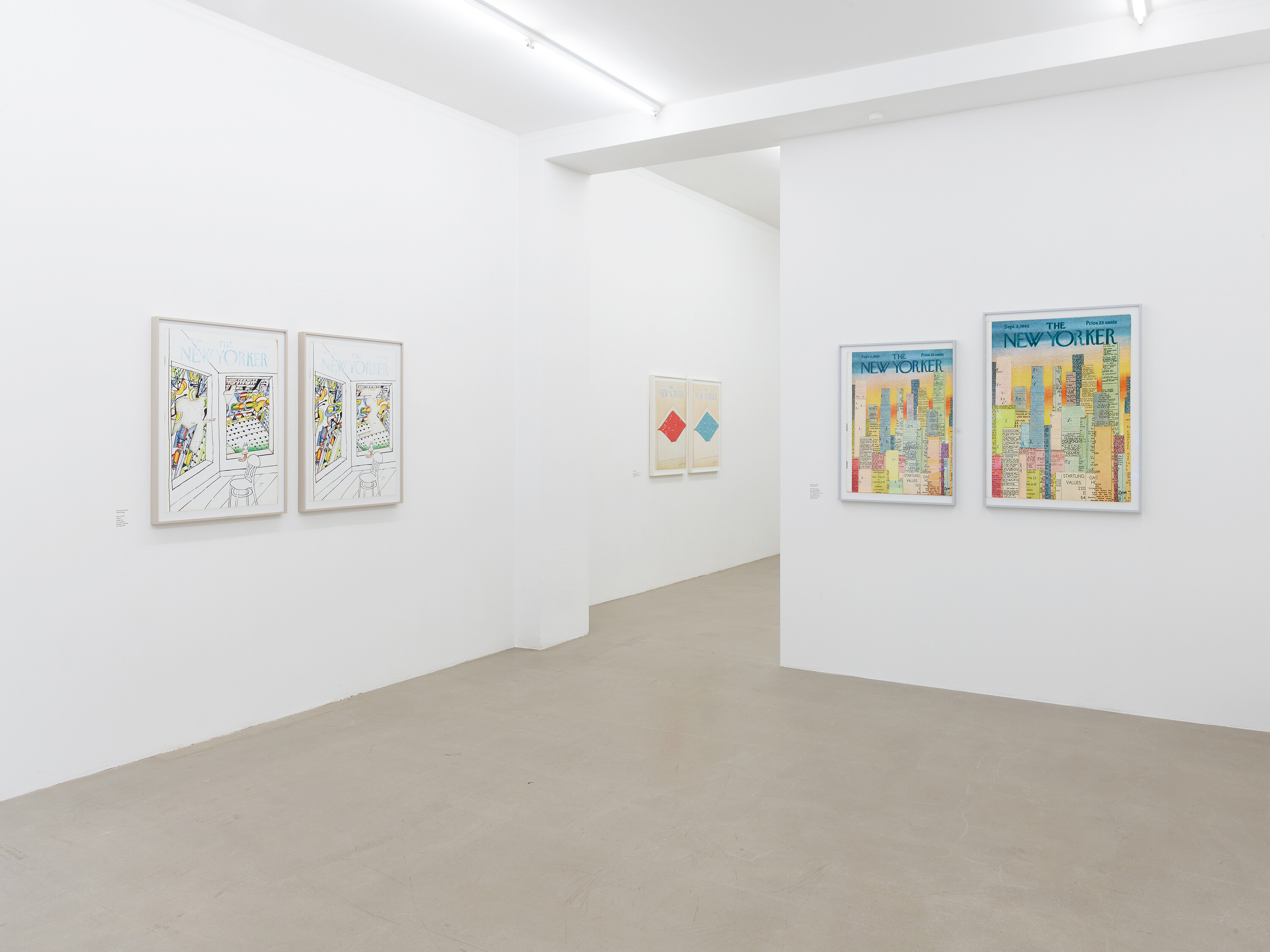
A window view by Robert Creeley
The diptych is based on the cover illustration of “The New Yorker” by Charles E. Martin published in 1962. In reference to the different housing standards, he created a collage of New York’s skyline from excerpts of various real-estate ads. Natalie Czech cuts out several ads down to page two containing the column “Goings On About Town“ and marked the words of Robert Creeley’s (1926-2005) poem with crosses. The original text, the motif and the found poem enter into a dialog that makes palpable all the sideshows between what is said and not said, between what is hidden and visible, between the political and private.
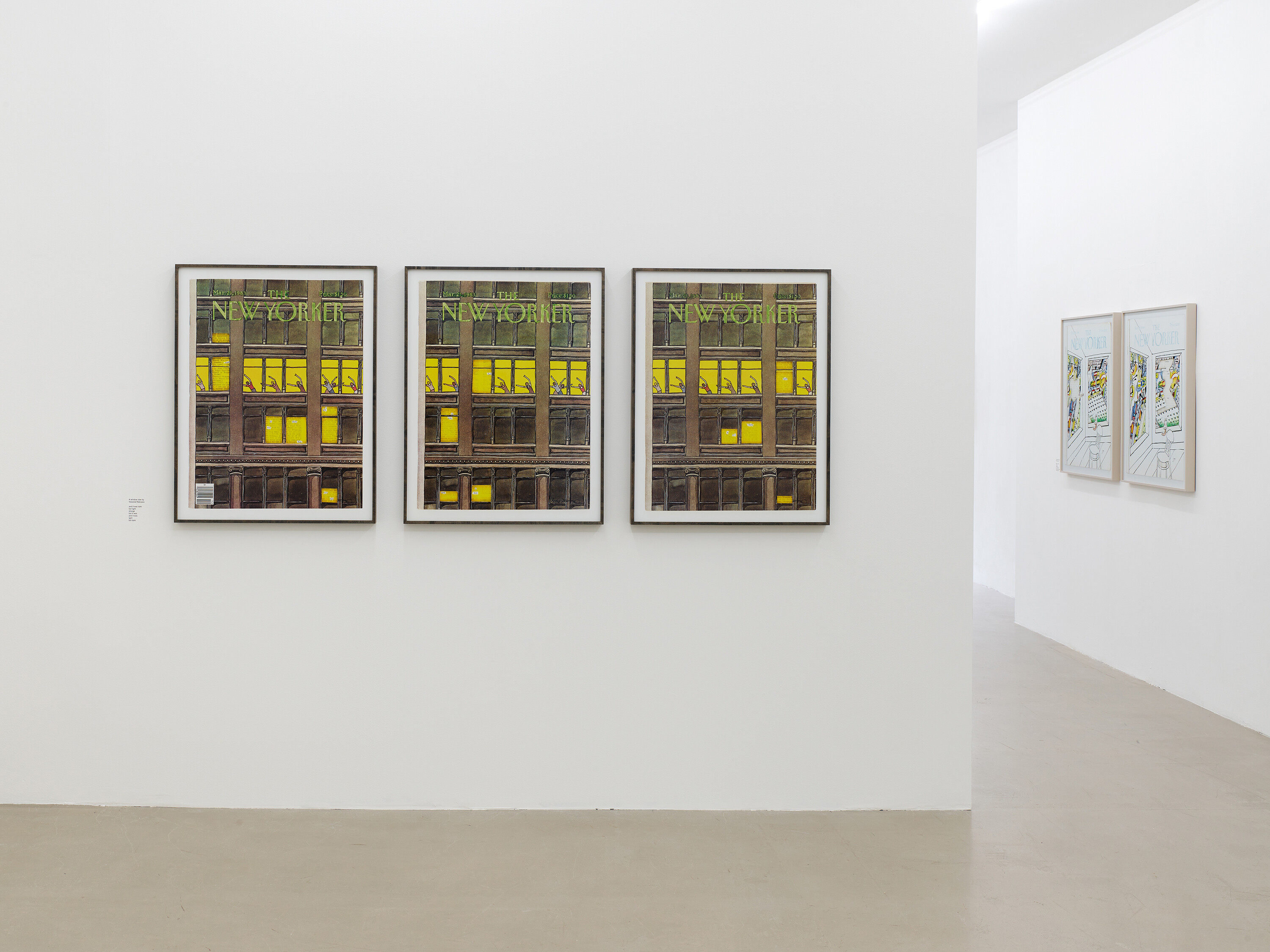
A window view by Vsevolod Nekrasov
The triptych is based on the cover illustration of “The New Yorker” by Roxie Mundo published in 1983. It shows a close-up of a New York building with only one floor illuminated, where we see silhouettes of dancing people. Natalie Czech “newly” illuminated individual windows by cutting them out down to page 26 that features the column “Goings On About Town.” The titles of the movies reviewed in the column, including “To Be Or Not To Be” (Ernst Lubitsch 1942), “Tales Of Ordinary Madness” (Marco Ferreri, 1982) or “The Year Of Living Dangerously” (Peter Weir, 1965), appear as descriptions of the pandemic lockdown, during which dancing was forbidden. In the reviews, Natalie Czech finds and marks the poem by Vsevolod Nekrasov that can be read as a sinister poetic commentary on the deserted inner cities.
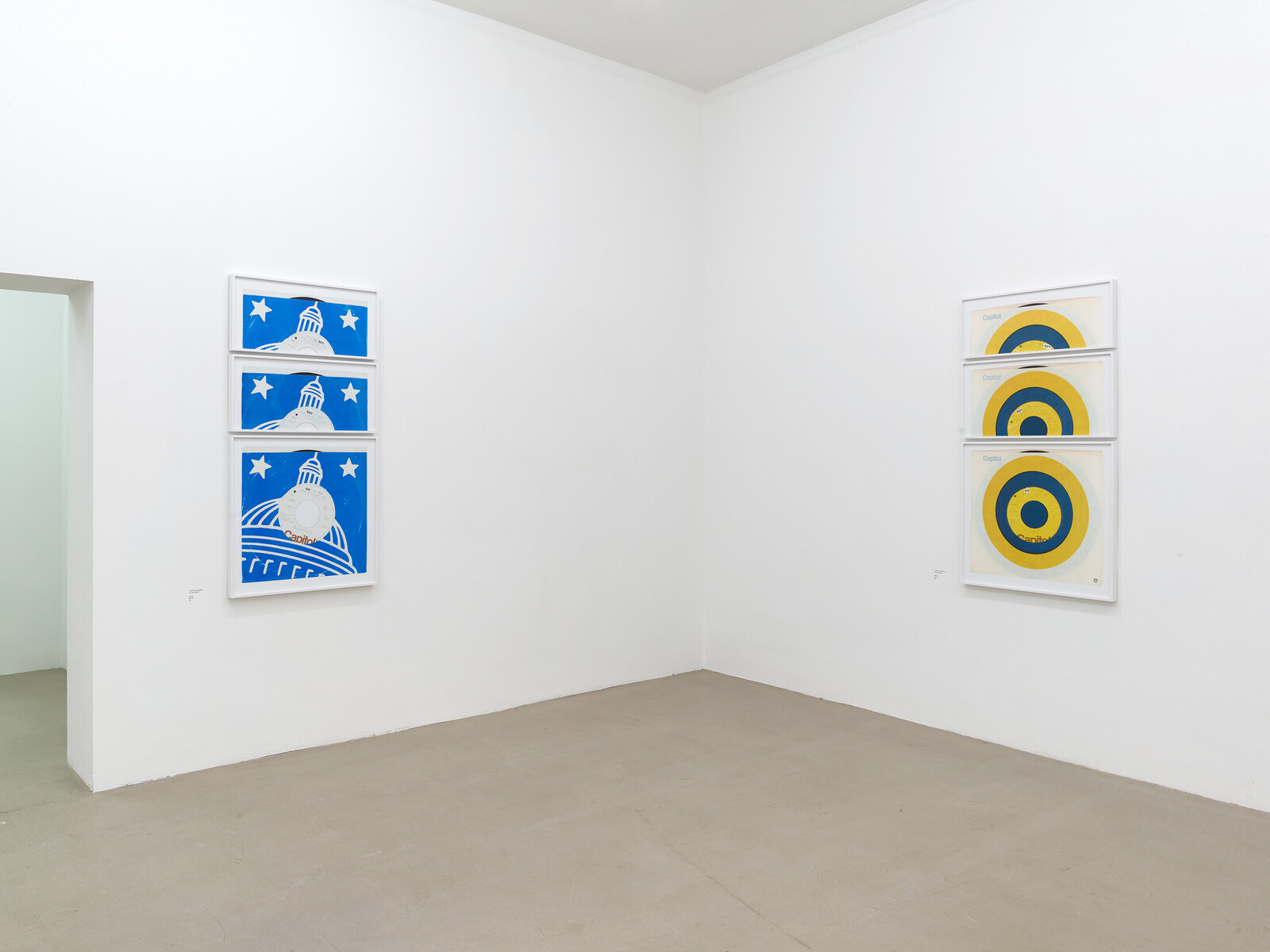
This subtle form of making political statements is taken up by the “Capitol” motifs. All four works are based on motifs of so-called “generic record sleeves,” in which the American label “Capitol Records” distributed the 1966 Beatles song “Got To Get You Into My Life” to radio stations and music critics. Therefore, all motifs show the Capitol in the form of image or text. In the respective original text, Natalie Czech finds and marks the minimal poem by Larry Eigner “get for – got for – go”. The minimalism of the words, which can stand for the present and future, leave everything open. In combination with the Beatles, the motif of the Capitol and the collective knowledge of the attack on it on January 6, 2021, Natalie Czech constructs a moving dialog between different stories that connect the personal with the political.
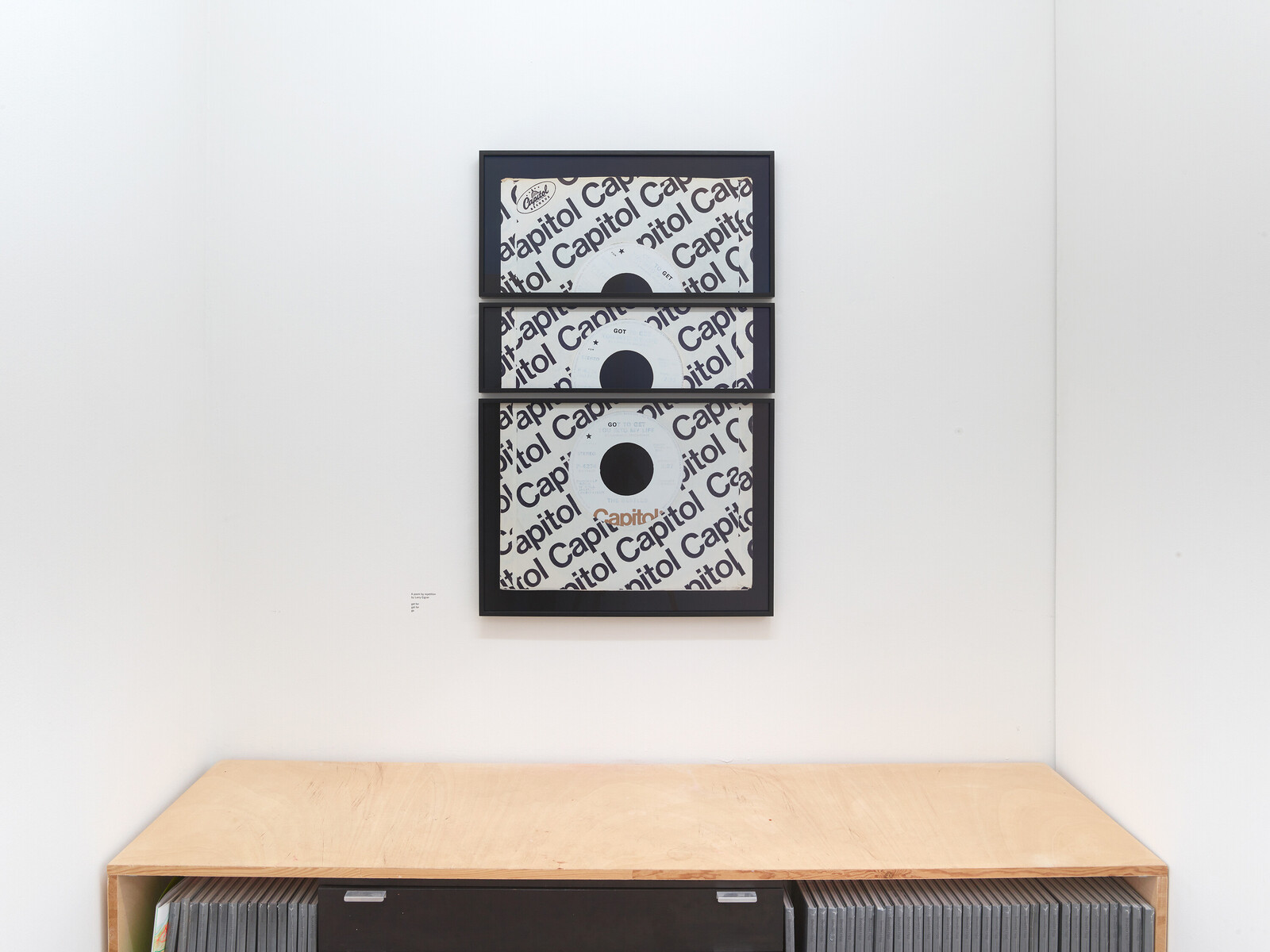
A poem by repetition by Larry Eigner
All four works are based on motifs of so-called “generic record sleeves”, in which the American label “Capitol Records” distributed the 1966 Beatles song “Got To Get You Into My Life” to radio stations and music critics. Therefore, all motifs show the Capitol in the form of image or text. Sleeve No. 1 was produced in 1966, and the succinct lettering “CAPITOL” already reminds one of concrete poetry. Sleeves No. 2 and 3 were produced between 1969 and 1978. The design shows different colored circles reminiscent of records, but also of targets or the focus of a single-lens reflex camera. Sleeve No. 4 was produced as late as 1991 and depicts the outline of the Capitol. In the respective original text, Natalie Czech finds and marks the minimal poem by Larry Eigner “get for – got for – go”. The minimalism of the words, which can stand for the present and future, leave everything open. The biography of Larry Eigner (1927-1996) plays an important role for Natalie Czech. Paralyzed since his childhood, Eigner could perceive the world almost only from inside his house, from a car or a plane. For him personally, this limitation impeded the simple “go” of the poem. In combination with the Beatles, the motif of the Capitol and the collective knowledge of the attack on it on January 6, 2021, Natalie Czech constructs a moving dialog between different stories that connect the personal with the political.
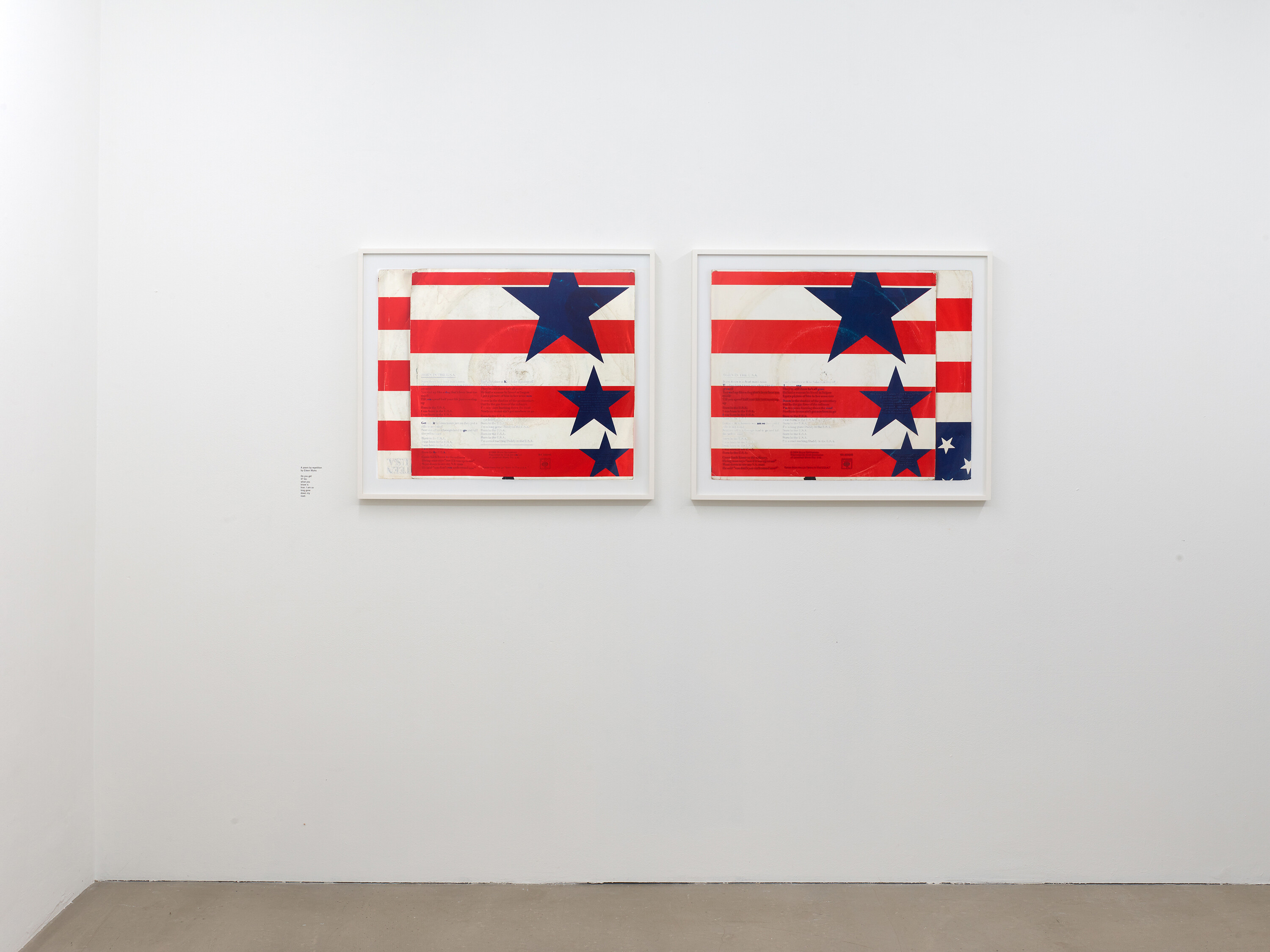
A poem by repetition by Eileen Myles
The diptych shows the reverse side of the single “Born in the U.S.A.” (1984) by Bruce Springsteen. Under it to the right and left, parts of the world-famous cover protrude. Springsteen himself understands his song as social criticism, but it has been repeatedly misunderstood by Republican politicians such as Ronald Reagan or Donald Trump. In the original lines of the song, Natalie Czech “finds” and “marks” the part of a poem by Eileen Myles that deals with finding “one’s own way”. The motif, text and poem literally place multiple perspectives in a dialog.
Biografical note
Natalie Czech’s work is known through numerous international solo exhibitions and museum collections such as Pinakothek der Moderne Munich, Fotomuseum Winterthur, Museum of Modern Art New York, Bundeskunstsammlung or Musée d’Art Moderne in Geneva. Natalie Czech was born in Germany in 1976 and studied photography at the Kunstakademie Düsseldorf. Since 2020, she has held a professorship in photography at the Kunstakademie in Braunschweig. On 8th July 2021 the MAMCO in Geneva opens Natalie Czech's solo exhibition, before that solo exhibitions were shown at Kunstverein Heilbronn (2021), KINDL - Center for Contemporary Art, Berlin (2019), CRAC d’Alsace (2016), Palais de Tokyo Paris (2014) or Kunstverein Hamburg (2013).
